Jalaluddin Muhammad Akbar was the third Mughal Emperor, and undoubtedly, one of the greatest rulers in the history of India. Emperor Akbar was a remarkable theologian, ruler, warrior and animal trainer. During his era, Mughal Empire had a significant territorial gain across the Indian subcontinents. Mughal Emperor Akbar also was excellent in establishing stable administration across his empire. The famous Ain-i-Akbari, written by Abul Fazl, the court historian of Akbar, documents the administration of Akbar in detail. The life history of Akbar is full of struggles with internal and external enemies, and hence very interesting.
The First Battle of Panipat concluded the long era of Delhi Sultanate and established Mughal Empire in India. Akbar was the first Mughal emperor to spread Mughal territory beyond north India. Suri Dynasty of Northern India forced Emperor Humayun to stay back to the Sindh region. The supremacy of Bairam Khan, general of young Akbar, reestablished at Delhi. But Akbar was exceptional to suppress the mighty Rajput warriors of Northern India before expanding to other parts of India. The rivalry with Maharana Pratap of Mewar was significant part in the life history of Akbar.
Early life of Emperor Akbar
On his successive defeats to Sher Shah Suri at the Battles of Chausa and Kannauj, Humayun had to escape towards Sindh by 1541. Badshah Humayun refuged at the Rajput fort of Amarkot. There Humayun met Hamida Banu Begum and married her. Prince Akbar was born to them on 25 October, 1542. Prince Akbar in his early life, brought up in Kabul, with his paternal uncle, Kamran Mirza.
During the exile of Humayun, Akbar grew up with his paternal uncle Kamran Mirza in Kabul. Maham Anga was the foster mother and wet nurse of Akbar. Young Akbar was a remarkable hunter and fighter, who eventually became a brave warrior. Training animals like horses, elephants and leopards was one of his horrific hobbies. His animal farms consited livestocks of more than a thousands of leopards, horses and elephants, whom Akbar would train himself.
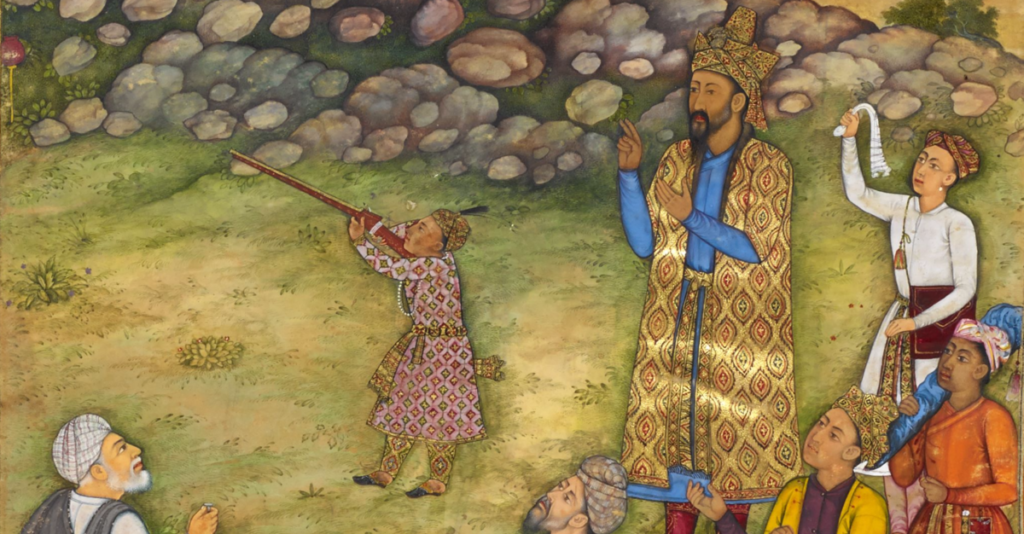
Akbar was undoubtedly the favorite son to his father, Humayun. Few Akbarnama paintings depict the adorable relations between Mughal Emperor Humayun and young Akbar. In 1551, Hindal Mirza, paternal brother of Humayun, died in the Battle with Kamran Mirza at Ghazni. Emperor Humayun, thereafter appointed Akbar as the governor Ghazni. Young Akbar married Hindal’s daughter, Ruquaiya Sultan Begum. It was the first marriage of prince Akbar, at the age of just 9 years.
Emperor Humayun reclaimed his lost territories of Punjab, Delhi and Agra by 1555. But in next year, Badshah Humayun died of an accident. It left 13 years old Akbar and surviving Mughal Empire in a precarious situation.
Ascending the Throne
Muhammad Jalal-ud-din Akbar succeeded his father on 11 February, 1556 at the Mughal throne at Kalanaur, Punjab. Bairam Khan, his military commander, declared Akbar as the new Mughal emperor during their battle with Sikandar Shah Suri. Situations was never favorable to just 13 years old Akbar. But Bairam Khan guided Akbar to consolidate the empire.

Hemu, the commander of Suri ruler Adil Shah Suri soon reclaimed several lost territories from the Mughals. On 7 October, Hemu defeated Akbar’s general Tardi Beg Khan in the Battle of Tughlaqabad and captured Delhi. Under Bairam Khan’s leadership, Mughal Army somehow defeated Hemu’s huge army at the Second Battle of Panipat.
Administration of Akbari Mughal Empire
Mughal Emperor Akbar the great had reformed many of conventional administrative practices in his empire. The Ain-i-Akbari of Abul Fazl has detailed mentions about the new practices which Akbar adopted in his administration. The primary objective of his administrative policies to establish respect and equality across his feudal kings, commanders and common man. The Court of Akbar was extremely famous for his justice for all.
Mansabdari System
The first and mostly discussed reformation that Akbar implemented was replacing conventional administrative system with Mansabdari. He assigned his civil administrators new military ranks with the duty of revenue collection. The word ‘mansab’ is an Arabic word which means rank or position. Akbar, the greatest Mughal Emperor, alloted ranks of commanders depending on their unit size. Unit size would vary from 10 soldiers to 5,000 soldiers or more. He also appointed Mansabdar as the chief of a large military unit.
Each member would get salary according to his ‘mansab’ or rank from the emperor’s treasury. Sometimes, salaries were released from the collected revenues and balance amount were transferred to the emperor’s treasury. The uniform distribution and balance between duties and payouts returned a great success to Akbar’s Mansabdari System. More important result the Mansabdari System brought was, abolition of the nobility of sword to a great extent.
Rajput Policy of Akbar
Akbar had realized the spirit of independence is how much strong among the Rajput Kings. Hence he took a different, diplomatic policy especially for Rajput Kingdoms. He appointed several Rajput kings in important Mughal posts to strengthen the Mughal-Rajput alliance. Many of them were part of the Mughal Court of Akbar.
Discontinuation of Jizya, the Hindu Pilgrimage tax, was a historical decision of Akbar. It earned him a lot of faith and respect from his Hindu feudal kings and common people.
According to Abul Fazl, Akbar also implemented marriage policy to emphasis his relations with his allied powers. Akbar himself married several Rajput princesses to assure his Mughal-Rajput alliance is not in dispute. Jodha Bai, the princess of Amer and daughter of Raja Bharmal was Akbar’s favorite Hindu wife. There are several legends on the love story of Mughal Emperor Akbar and Rajput princess Jodhabai.
Akbar continued his marriage policy with the Hindu Rajput families beyond his generation as well. Emperor Akbar had several Hindu Rajput wives. He also arranged marriages of his sons and grandsons with Rajput Princesses.
Military Campaigns of Mughal Emperor Akbar
The military campaigns of Akbar the great is a significant part of his life history. Akbar won most of the battles which he fought. However, some of the results are though contentious. Akbar introduced Mansabdari system in his army, defining various positions in army with respective ranks. Such uniform and fair administration got Akbar a great success in his military campaigns across the Indian subcontinents.
Second Battle of Panipat
Victory over Hemu probably was the most crucial conquest for Akbar, especially in terms of stabilizing the Empire. However, Akar was too young then to participate actively in the battle though.
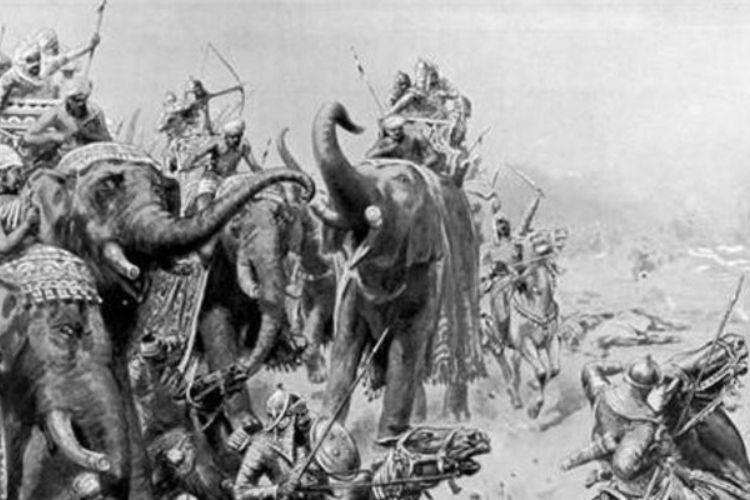
The 30,000 cavalry of Hemu was too big in front of 10,000 cavalry force of Mughal Army. Hemu, with no surprise, was very close to a comprehensive victory. But a Mughal arrow shot to his eye made Hemu fall from his elephant unconsciously. Hemu’s soldiers thus panicked and started leaving the battlefield. Bairam Khan eventually beheaded Hemu that concluded the battle. Many historians, therefore mark the Second Battle of Panipat as a lucky victory to Akbar.
Conquest over Malwa
Badshah Akbar history is also famous for his successful military campaign against the Sultanate of Malwa. Not only that, it was one of the major battles fought by Abkar. In 1561 CE, General Pir Muhammed Khan and Adham Khan, the foster brother of Jalal, led the Mughal army march towards Malwa. In the battle of Sarangpur in 1561, the Mughal army defeated the last ruler of Malwa Sultanate, Baz Bahadur and deserted him. The Mughal troop then stormed into the fort of Mandu, capturing the fort. After this successful Mughal conquest of Malwa, it became an emerging royal administration of Mughals under the realm of Akbar.
Mughal conquest of Rajputana
After proving his dominance over the Sultanate of Malwa, it only Rajputana that Akbar still had to overpower. Otherwise, his authority over North India would remain incomplete. The Rajput Kingdoms of Mewat, Ajmer and Nagor had already accepted the suzerainty of Akbar. Therefore, the Mughal dominance were already existing in northern Rajputana. Rana Uday Singh of Mewar and Chandrasen Rathore of Marwar were the few, who had disagreed to submit themselves to the Mughal Empire.
Chittor, the fortress capital of Mewar was on the shortest route from Agra to Gujarat. Therefore, the place had a great strategic significance in terms of trades and military movements as well. In 1567 CE, Akbar led his army to successfully capture the Chittorgarh fort. Rana Uday Singh, father of Rana Pratap Singh, exiled towards the west, at the hill-forest fortress of Kumbhalgarh.
The Mughal army continued their conquest on Rajputana by capturing Ranthambore Fort in 1568; once considered as the most powerful fortress in India. By this time, almost all Rajput Kingdoms had submitted themselves to the Mughal Empire. Therefore, it did accomplish the expansion of Mughal Empire under Akbar in Rajputana region also. Mughal emperor Akbar returned to Agra and ordered to form his new capital city – Fatehpur Sikri, which means ‘The city of victory’.
Rana Pratap and Akbar rivalry
Mughal emperor Akbar and Maharan Pratap history, probably, speaks about the most discussed rivalry of 16th century. Mewar Maharana Pratap and Akbar the great, two great warriors of India, continued to engage in various confrontations through out their lives. There were numerous battles between Maharan Pratap and Akbar took place. However, it was the battle Haldighati, where Akbar defeated Maharana Pratap. But Mughal army could not capture Maharana. But it certainly brought a huge territorial loss to Maharana Pratap Singh.
However, in later phase of his life, Maharana Pratap succeeded to regain majority of his lost territories from the Mughals.
Military expeditions to Gujarat
Expansion of Mughal Empire under Akbar the great, was not limited to Malwa and Rajputana only. But the Mughal ruler also had plans for military movements towards western and eastern parts of India. After successful conquest of Rajputana, it opened up the direct route to Gujarat from Agra. According to Abraham Eraly, the Indian writer, the expedition of Gujarat was extremely successful. In 1572 CE, another military campaign under Akbar brought Ahmedabad under Mughal control. The rebels of Gujarat agreed to pay an annual revenue tax of about five million rupees annually to the treasury of Akbar. It also opened up the trade route to Africa and Europe.
Conquest to Bengal
Military campaigns under Akbar to Bengal was equally important. Until now Akbar control of almost all Afghan dynasties except of Bengal. Sulaiman Khan Kurrani, once serving under Sher Shah Suri, was gaining power in Bengal. However, Sulaiman Khan had submiited himself to the Mughal supremacy. But his son, Daud Khan, refused to do so. Therefore, Akbar led the Mughal army to seize Patna in 1574 CE. Having no option left, Daud Khan moved back towards Bengal.
However, after Mughal army seized Patna, Akbar ordered his army generals to continue the campaign, but himself returned to Fatehpur Sikri. As a result of the military campaign of Akbar, a majority part of Bihar and Bengal came under Mughal Empire. Only Orissa and some parts of Bihar still left under Daud Khan’s control. It also opened up the trade routes of other Asian countries.
Other military campaigns under Akbar
Expansion of Mughal Empire under Akbar was still incomplete. However, after his successful campaign in Bengal, he majorly focused on domestic concerns. However, in 1581, Mirza Muhammed Hakim, the younger brother of Akbar, invaded Punjab. When Akbar retaliated, Mirza Hakim fled back to Kabul. But Akbar was adamant to close such issues in a single shot. Shortly in the same year, he led his army to Kabul, and seized the town. Hakim Mirza was able to escape to the mountainous region of Kabul.
According to some historians, Akbar stayed in Babur’s own castle in Kabul for few weeks, searching for Mirza Hakim. However, after Akbar had given the charge of Kabul to his sister, Bakht-un-Nissa Begum; appointing her as the Governor of Kabul.
Apart for these military campaigns, the third Mughal emperor also had several military conquests. Some of them are:
- Akbar sent Mughal army to Kashmir, the upper Indus valley region in 1585 CE, to force a surrender from Ali Shah. On arrival of Mughal army at Kashmir, Ali Shah, King of Shia Chak dynasty, surrendered immediately.
- Yaqub Shah, son of Ali Shah, later declared himself as king of Kashmir, and refused to submit himself to the Mughal Empire. According to some historians, Akbar himself travelled to Kashmir valley in 1589 to enforce Yakub to surrender.
- Some parts of Baluchistan were still under control of some Afghan rebels on that period. In order to take control of the unrest, Akbar sent a Mughal troop to Baluchistan in 1595 CE. In some discrete battles, Mughal army enforced the rebel chiefs to surrender.
- Akbar also started military campaigns against the Deccan Sultans in 1595 CE. In the same year, Akbar besieged the fortress of Ahmednagar and expelled Sultana Chand Bibi, a regent of Ahmednagar Sultanate.
Final thought about Akbar as a warrior
Jalaluddin Akbar has been excellent in order to expand Mughal Empire across the Indian sub-continent. He spent almost all his life in expansion of Mughal Empire. During the realm of Akbar, Mughal army was considered as the strongest armed force of 16th century in Indian sub-continent. His expeditions on various directions suggests his military and political skills he possessed.
Head of Mughal army under Akbar was called Mir Bakshi. The army chief was responsible for intelligence gathering and structuring the troops for a military campaign. So many successful military campaigns under Akbar are itself a proof of his excellent administrative skills. Akbar also brought in fixed salary system according the ranks of his soldiers. Apart from salaries, horses, uniforms and other facilities were also provided to the soldiers; depending on their ranks. The Mughal army, restructured by Akbar was known as Mansabdari System.
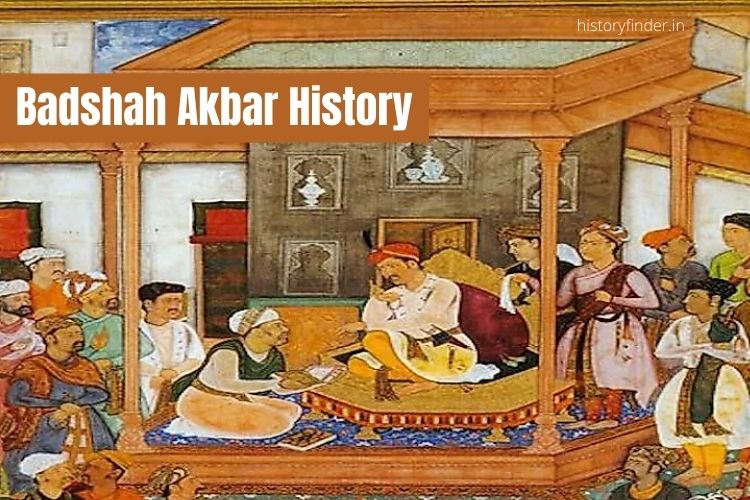
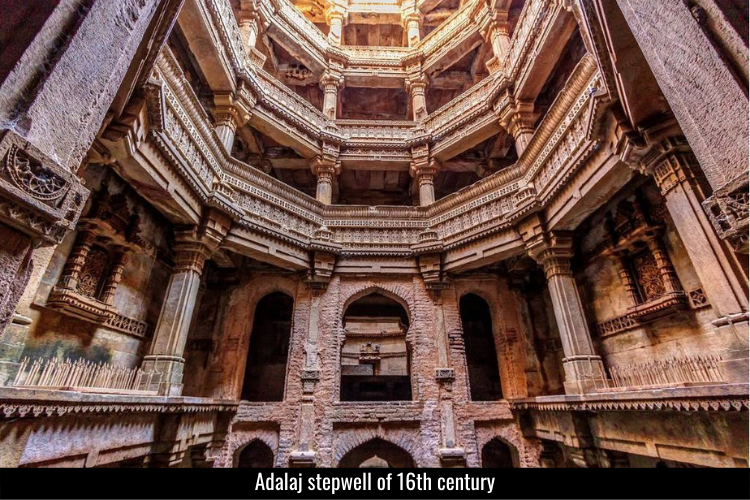
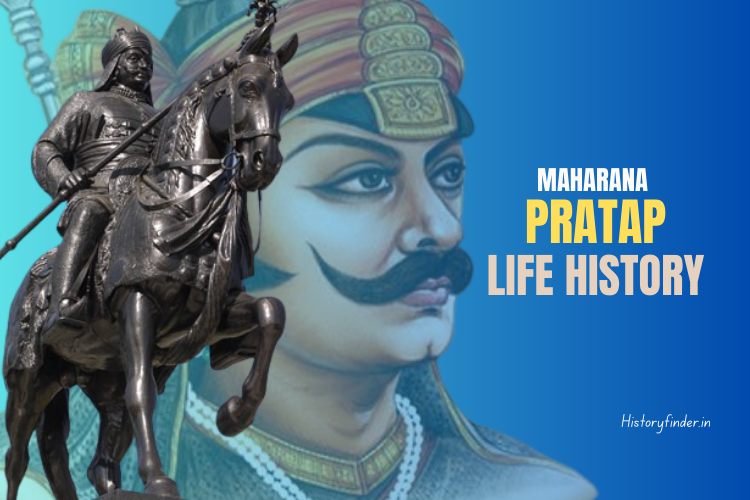
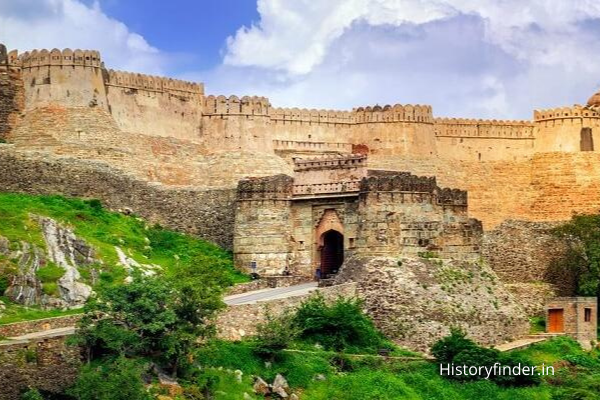
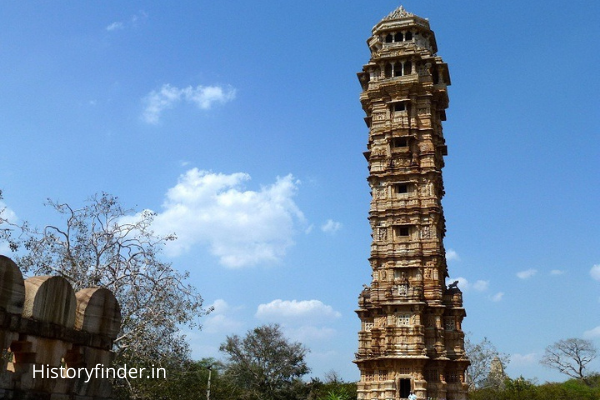
Pingback: Maharana Pratap Singh, the brave Rajput warrior - History Finder